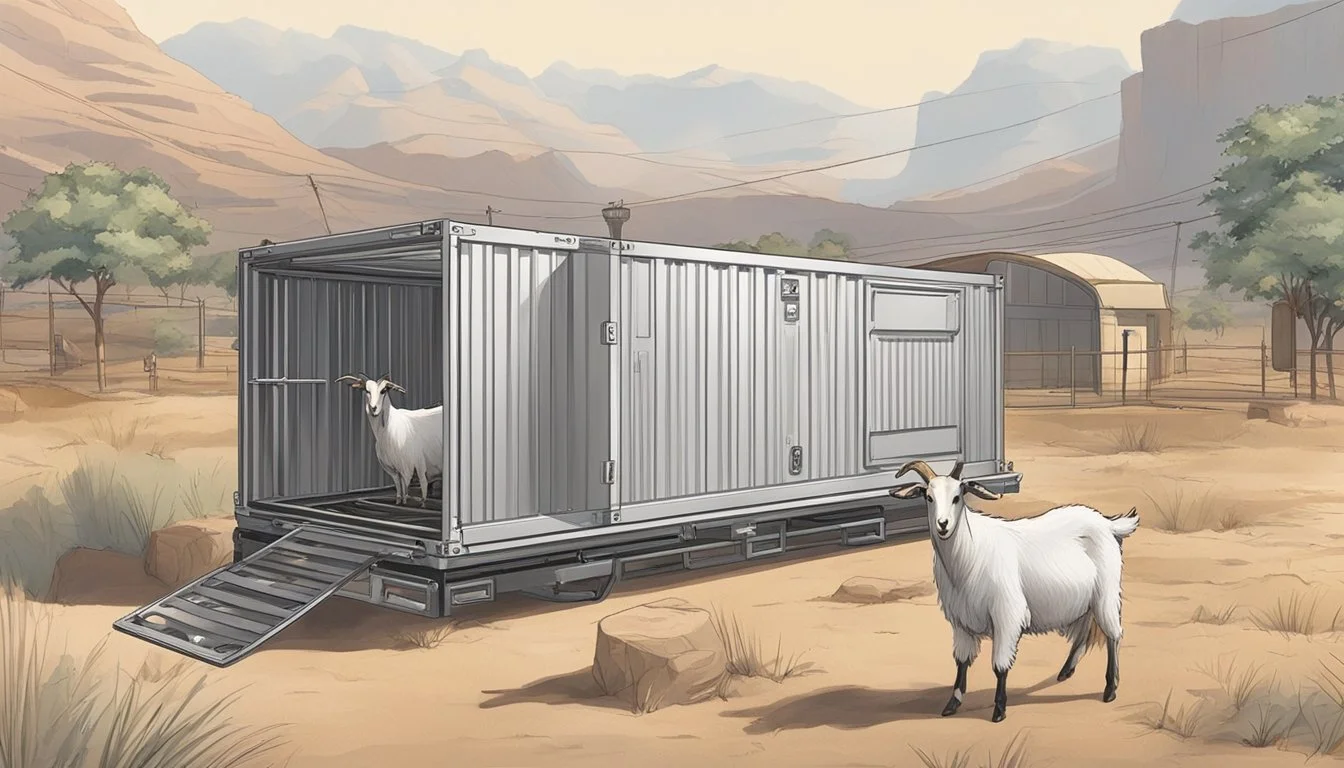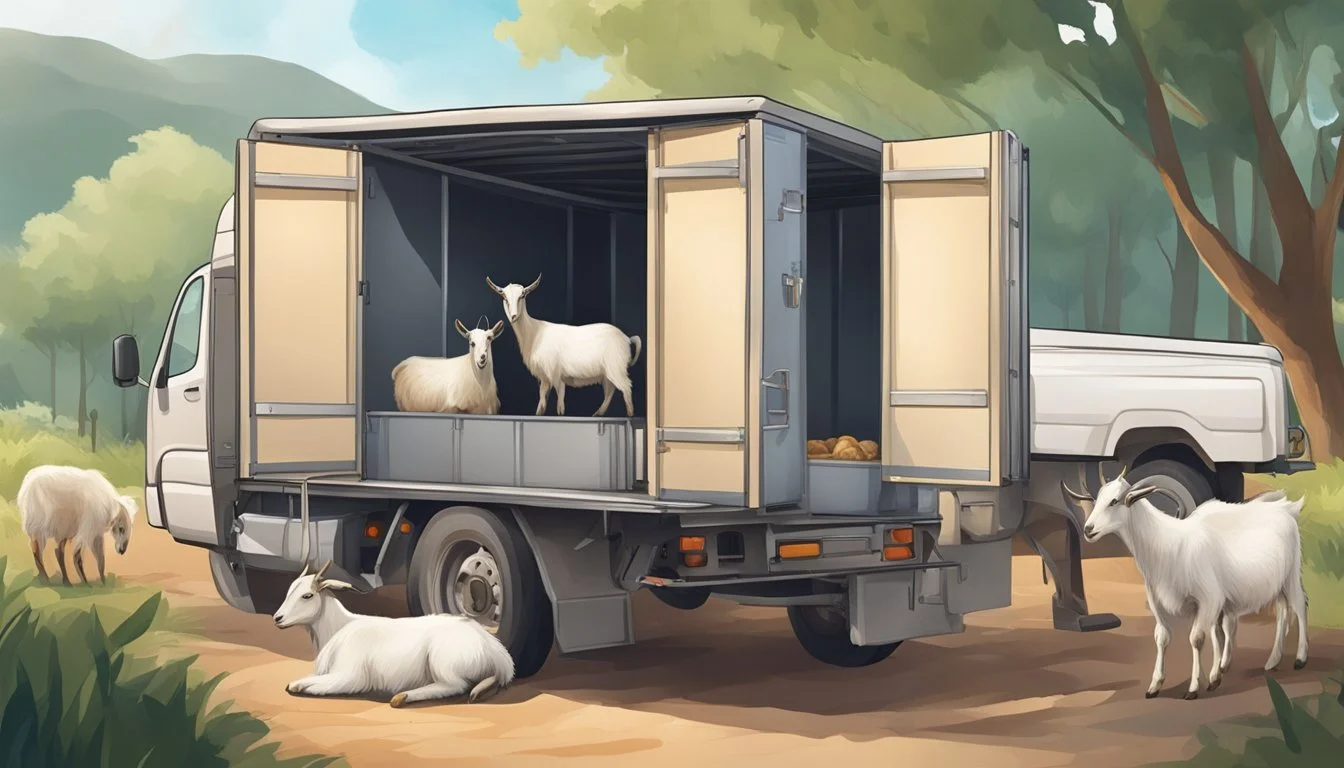What is the Best Way to Transport Goats Safely and Efficiently?
Transporting goats, whether it's for relocation, veterinary visits, or shows, requires careful planning and the right approach to ensure the animals' safety and minimize stress. The key is to provide a comfortable environment that is secure and familiar to the goats. Before the actual day of transport, it's beneficial to acclimate the goats to their travel enclosure. Allowing goats to explore and spend time in the vehicle or trailer can make loading them much easier when it's time to depart.
For the transport process itself, a vehicle with ample space, proper ventilation, and a smooth suspension system is vital for the goats' well-being. Ensuring that the goats have enough room to stand, turn, and lie down without overcrowding prevents injuries and stress. Implementing these practices not only contributes to the goats' physical health but also to their emotional state during transportation, which can have a lasting effect on their overall performance upon arrival.
Understanding the Basics of Goat Transport
Transporting goats requires careful planning to ensure their safety and minimize stress. Selecting the appropriate mode of transport is crucial for their well-being during relocation.
Importance of Safe Transport for Goats
Safe transport is vital for goats' health and comfort. Stress during transportation can result in reduced immune function and increased susceptibility to diseases. Additionally, improper handling and transport can cause physical injuries to goats. It is imperative that the chosen method of transport protects them from environmental elements and provides enough space to stand, turn around, and lie down comfortably.
Types of Transportation Options
Several transportation options are available for goats, each with its own set of considerations:
SUVs and Trucks: Smaller numbers of goats can be transported in the back of an SUV or a truck bed. When using these, it's essential to provide secure crates or harnesses to prevent injury.
Trailers: For larger herds or long-distance travel, livestock trailers are preferred. They offer more space and can be equipped with proper ventilation, partitions, and slip-resistant floors.
Crates: Suitable for small kids or individual goats, crates should be well-ventilated and large enough for the goat to lie down and turn around in. Crates can be used in combination with other vehicles.
Choosing the right transportation option involves considering the number of goats, the distance they need to travel, and ensuring their safety and comfort throughout the journey.
Preparing for Goat Transport
Transporting goats safely requires meticulous planning and attention to their needs. The foundation of a successful journey lies in the health assessment of the goats, gathering appropriate equipment and supplies, and understanding the legal requirements.
Conducting Health Assessment
A health assessment is critical before goat transport. This ensures that the animals are fit to travel and reduces the risk of spreading diseases. Check each goat for common health issues and administer necessary worming treatments. It's advisable to obtain a health certificate from a veterinarian, confirming that your goats are in good health and free of contagious diseases.
Gathering Necessary Equipment and Supplies
Proper equipment is essential for transporting goats comfortably and safely. Livestock trailers should provide adequate space, ventilation, and secure footing. Inside the trailer, have fresh water and hay easily accessible to satisfy the goats' needs for food and water throughout the journey. Also, ensure you have all materials ready for loading and unloading the goats, such as ramps or guide rails.
Understanding Legal Requirements
Compliance with legal requirements is non-negotiable when transporting livestock. This often includes carrying a valid health certificate for each goat and adhering to transport regulations, which may vary by region. Acquiring the proper documentation and understanding these regulations will not only ensure a lawful transit but also promote the welfare of the animals involved.
Choosing the Right Transportation Vehicle
When transporting goats, selecting an appropriate vehicle is crucial. The vehicle should ensure the goats' safety, comfort, and should comply with transportation regulations.
Features of Suitable Trailers
Trailers are the most common transportation choice among goat owners for their capacity and ease of loading. Suitable trailers must include:
Adequate Ventilation: Ample fresh air is essential to avoid overheating and stress among the goats during transit.
Appropriate Size: Double axle trailers offer stability and space, allowing goats to stand, turn, and lie down comfortably.
Secure Fencing: To prevent escapes or injury, fencing should be sturdy and without sharp edges.
Alternative Vehicles for Smaller Herds
For smaller herds, alternative vehicles such as an SUV or a truck bed can be effective. Essential considerations include:
Containment: Using dog crates or similar enclosures within the vehicle can prevent injury and escape.
Climate Control: Especially in an SUV, climate control is vital to maintain a stable temperature and proper airflow.
Adapting Vehicles for Safe Transport
Adapting a vehicle for the transport of goats involves several key modifications:
Non-Slip Flooring: Provides stability for the goats and helps to reduce the risk of falls.
Partitioning: In a large space such as a truck bed, partitions can prevent the goats from being jostled or injured during movement.
By focusing on these specific features and adaptations, one can create a safe and comfortable environment for goats during transport.
Ensuring Goat Comfort and Safety During Transit
Transporting goats requires careful planning to ensure their comfort and safety. Proper space, ventilation, and secure enclosures are imperative for a stress-free journey.
Space and Overcrowding
Space Requirements: Each goat should have enough room to stand, lie down, and turn around without restriction. Overcrowding can cause stress and increase the risk of injury.
Ideal Space Allocation:
For smaller breeds: Minimum of 4 square feet per goat.
For larger breeds: Minimum of 6 square feet per goat.
Avoid overcrowding as it not only causes discomfort but also heightens the risk of disease transmission.
Ventilation and Temperature Control
Maintaining Proper Airflow: Adequate ventilation is crucial to prevent respiratory issues and overheating. Ensure that the transport vehicle has a well-designed ventilation system to maintain a comfortable and safe environment.
Climate Considerations:
In hot weather, increase ventilation and provide access to water to prevent heat stress.
In cold conditions, protect goats from drafts and cold stress, but avoid completely sealing the vehicle as it can lead to moisture buildup and poor air quality.
Securing Goats and Preventing Injuries
Safety Measures: Properly designed enclosures with secure latches are essential to keep goats safe during transit. Enclosures should be free of sharp edges and hazards that could cause injury.
Securing Methods:
Use partitions to separate goats if necessary, which can prevent fighting and injuries.
Equip vehicles with non-slip flooring to help goats maintain balance and reduce the chance of falls.
By paying attention to these details, one can transport goats in a way that prioritizes their well-being and safety.
Managing Health and Stress in Transported Goats
Transporting goats requires careful attention to their health and wellbeing to prevent stress and illness. Managers should always prioritize the animals’ physical condition and comfort during transit.
Monitoring for Signs of Stress and Illness
Constant vigilance is essential when transporting livestock, particularly for early identification of stress and illness. Symptoms such as vocalization, refusal to move, lethargy, or excessive panting may indicate transportation stress or onset of conditions like pneumonia. Keep documentation like a health certificate up-to-date to ensure goats are fit for travel.
Providing Food and Hydration
Adequate food and water should be available, as per the goats' usual feeding schedule, to maintain health during transit. Stop periodically to provide fresh water to prevent dehydration—a common issue that can exacerbate stress levels. Use feeders that minimize spillage and contamination.
Maintaining Clean and Safe Transport Conditions
Cleanliness is crucial to avoid health problems. The transport environment should be free from debris that can cause injury or stress. Regularly remove waste to prevent disease spread and check for signs of internal parasites which can thrive in unclean conditions. Ensure the vehicle has proper ventilation and comfortable spacing allotted for each goat.
Post-Transport Considerations
After a successful transport, the focus shifts to ensure that the goats are unloaded safely and acclimate well to their new environment. Attention to detail during this phase can have a significant impact on the well-being of the goats.
Unloading and Acclimating Goats
Unloading should be a gentle process, with every precaution taken to prevent injury. Designing facilities with a ramp can facilitate a smooth transition from transport to ground. Once the goats are unloaded, they may require time to adjust to their new surroundings. It's important to provide a controllable and sufficient space for them to explore and become comfortable in their new habitat.
Monitoring After Transport
It's crucial to monitor the goats closely in the hours and days following transport. Signs of distress or discomfort may emerge, and early detection allows for swift intervention. They may experience fatigue similar to after strenuous activity, emphasizing the need for vigilance in their post-transport monitoring.
Ensuring Access to Food and Grazing
Finally, re-establishing a routine for the goats is essential, with particular emphasis on food and grazing. Ensure they have immediate access to fresh water and familiar feed to help mitigate the stresses of moving. Adequate grazing opportunities should also be provided soon after arrival to allow for normal feeding behavior, vital for their recovery and adaptation to the transfer.





